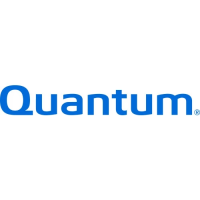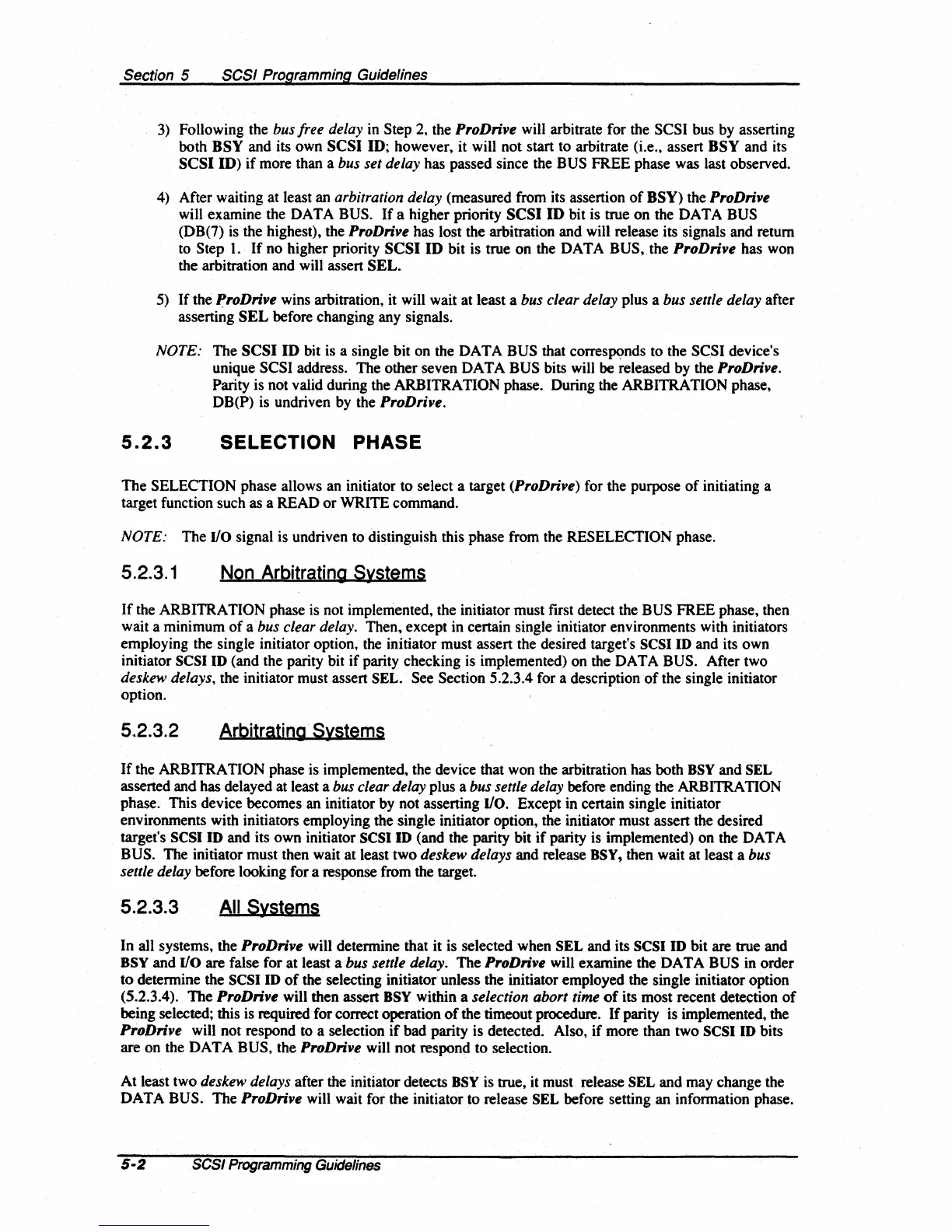Section 5
SCSI
Programming Guidelines
3) Following the bus free delay
in
Step 2, the ProDrive will arbitrate for the SCSI bus by asserting
both
BSY and its own
SCSI
ID; however, it will not start to arbitrate (Le., assert BSY and its
SCSI
ID)
if
more than a bus set delay has passed since the BUS FREE phase was last observed.
4) After waiting at least an arbitration delay (measured from its assertion
of
BSY) the ProDrive
will examine the DATA BUS.
If
a higher priority
SCSI
ID
bit is true on the DATA BUS
(DB(7) is the highest), the ProDrive has lost the arbitration and will release its signals and return
to
Step
1.
If
no higher priority
SCSI
ID
bit is true on the DATA BUS, the ProDrive has won
the arbitration and will assert
SEL.
5)
If
the
~roDrive
wins arbitration, it will wait at least a bus clear delay plus a bus settle delay after
asserting
SEL
before changing any signals.
NOTE: The
SCSI
ID
bit is a single bit on the DATA BUS that correswnds to the SCSI device's
unique
SCSI address. The other seven DATA BUS bits will be released by the ProDrive.
Parity is not valid during the ARBITRA
nON
phase. During the ARBITRATION phase,
DB(P) is undriven by the
ProDrive.
5.2.3
SELECTION PHASE
The SELECTION phase allows an initiator to select a target (ProDrive) for the purpose
of
initiating a
target function such as a READ
or
WRITE command.
NOTE: The
110
signal
is
undriven to distinguish this phase from the RES ELECTION phase.
5.2.3.1
Non Arbitrating Systems
If
the ARBITRATION phase is not implemented, the initiator must first detect the BUS FREE phase, then
wait a minimum
of
abus
clear delay. Then. except in certain single initiator environments with initiators
employing the single initiator option, the initiator must assert the desired target's
SCSI
10
and its own
initiator
SCSI ID (and the parity bit if parity checking
is
implemented) on the OAT A BUS. After two
deskew delays, the initiator must assert
SEL. See Section 5.2.3.4 for a description
of
the single initiator
option.
5.2.3.2 Arbitrating· Systems
If
the ARBITRATION phase is implemented, the device that won the arbitration has both
BSY
and SEL
asserted and has delayed at least a bus clear delay plus a bus settle delay before ending the ARBITRA
nON
phase. This device becomes an initiator by not asserting
110.
Except in certain single initiator
environments with initiators employing the single initiator option, the initiator must assert the desired
target's
SCSI ID and its own initiator SCSI IO (and the parity bit
if
parity is implemented) on the OAT A
B
US. The initiator must then wait at least two deskew delays and release BSY, then wait at least a bus
settle delay before looking for a response from the target.
5.2.3.3
All Systems
In all systems, the ProDrive will determine that it is selected when SEL and its SCSI
10
bit are true and
BSY and 110 are false for at least a bus settle delay. The ProDrive will examine the DATA BUS in order
to
determine the SCSI
10
of
the selecting initiator unless the initiator employed the single initiator option
(5.2.3.4). The
ProDrive will then assert
BSY
within a selection abort time
of
its most recent detection
of
being selected; this is required for correct operation
of
the timeout procedure.
If
parity is implemented, the
ProDrive will not respond to a selection
if
bad parity is detected. Also, if more than two SCSI
10
bits
are on the DATA
BUS, the ProDrive will not respond to selection.
At least two deskew delays after the initiator detects
BSY
is true, it must release SEL and may change the
DATA
BUS. The ProDrive will wait for the initiator to release SEL before setting an information phase.
5-2
SCSI Programming Guidelines

